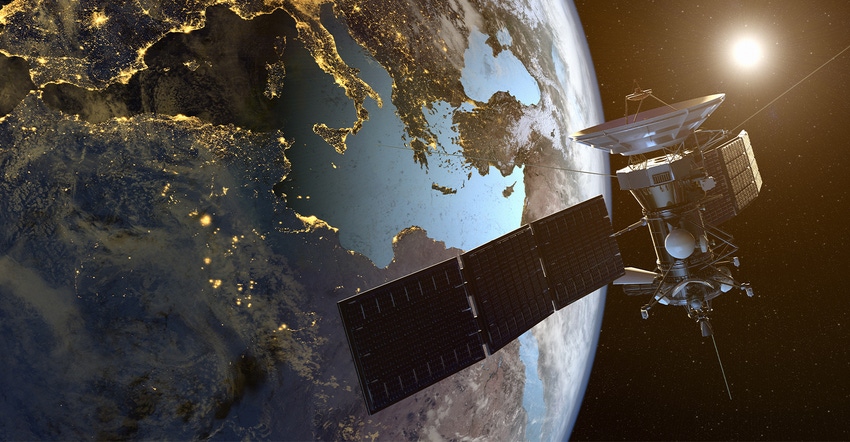June 14, 2019

The challenge looms before the plant breeding community: how to boost productivity of key crops to meet growing food demand for the future, while maintaining sustainability. For a group of Washington State University scientists, the answer is to look to the sky to improve wheat varieties.
Their work, funded by a $500,000 grant from USDA’s National Institute of Food and Agriculture, aims to develop techniques using satellite and drone imagery to identify and study wheat varieties from overhead. The work could speed up research into better, more productive wheat varieties.
Wheat is grown on more acres globally than any other crop. It is a staple feeding more than one-third of the world’s population. The challenge for breeders is meeting global demand while keeping ahead of devastating pests, pathogens and a changing environment.
Their work involves improving wheat varieties, and key to that is phenotyping — measuring the way plant genes are expressed physically. That way, breeders can select the best plants to breed for improved yield, grain quality and resistance to pests and diseases.
Phenotyping has, in the past, been done by hand. The researchers are looking into how modern cameras, sensors and satellites could take phenotyping to a new level. Leveraging that imagery could speed study of new wheat varieties to determine more quickly which are performing well in the field.
Images and genetics
Zhiwu Zhang, the Washington Grain Commission distinguished professor for statistical genomics in WSU’s Department of Crop and Soil Sciences, sees satellite imagery as a tool to help breeders find genes that maximize yield and beat stress and disease; the information could also show farmers which varieties grow best in their areas. “No one has been able to do this yet, but the rewards are highly worth the effort.”
While scientists can already learn a lot about crops from the wavelengths of light they emit — for example, water stress shows up in the infrared region of the electromagnetic spectrum — part of the project’s challenge is to learn whether wheat varieties and their physical characteristics can be differentiated by their spectral data.
Cameras and sensors are also getting more precise, and prices are dropping, providing more powerful tools to sense how crops are performing.
To better understand the sensor information from satellites, WSU researchers will use unmanned aerial vehicles to gather visual and infrared imagery from wheat plots. Flying over WSU experimental farms across eastern Washington this summer, drone cameras will collect data to be matched to satellite imagery. Success in this matching process could provide scientists the ability to identify and study wheat varieties from orbit.
Wheat breeders see value
Arron Carter and Mike Pumphrey, winter and spring wheat breeders with WSU’s Department of Crop and Soil Sciences, are interested in the potential for overhead sensing to speed up the selection process. Each year, Carter and Pumphrey plant several thousand experimental varieties of wheat, and each represents an investment in time and field capacity.
Notes Carter: “In our breeding programs, time means everything. If I can use a sensor on a drone or satellite to select only the best and remove the rest a year early, I’ve increased my capacity and saved time that’s better spent on varieties that show more promise for Northwest farmers.”
The research may also help growers around the world use satellite imagery to predict yields, monitor performance and protect crops from drought.
Team members on the project include Carter, Zhiwu Zhang and Pumphrey; Sindhuja Sankaran, an associate professor and sensor technology researcher; Yang Hu, a postdoctoral researcher; and James Chen, Chongyan Zhang and Worasit Sangjan, graduate students.
Source: Washington State University. The source is solely responsible for the information provided and is wholly owned by the source. Informa Business Media and all its subsidiaries are not responsible for any of the content contained in this information asset.
You May Also Like




